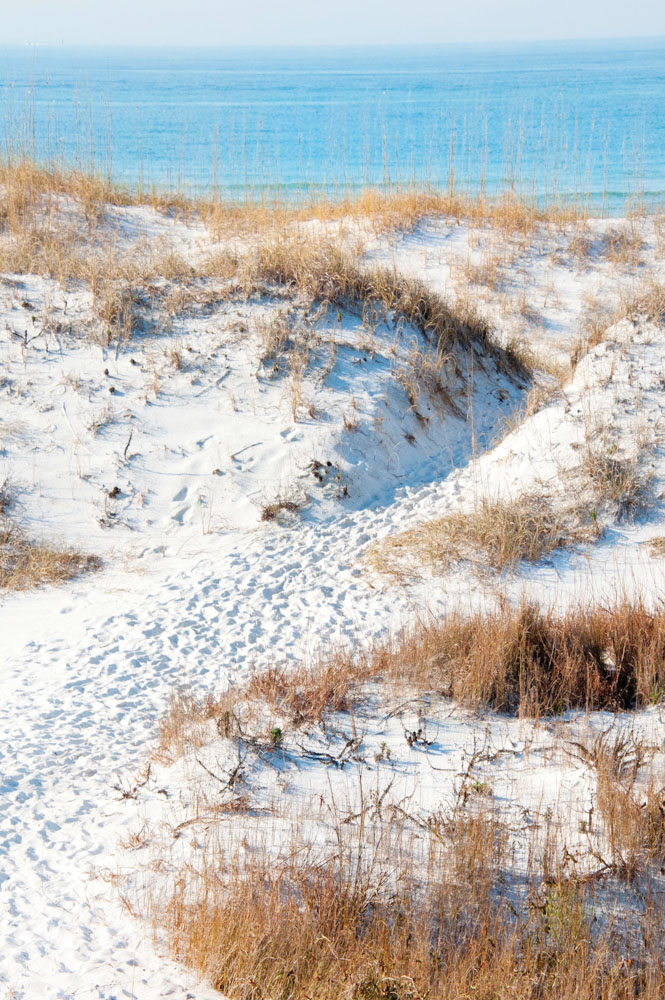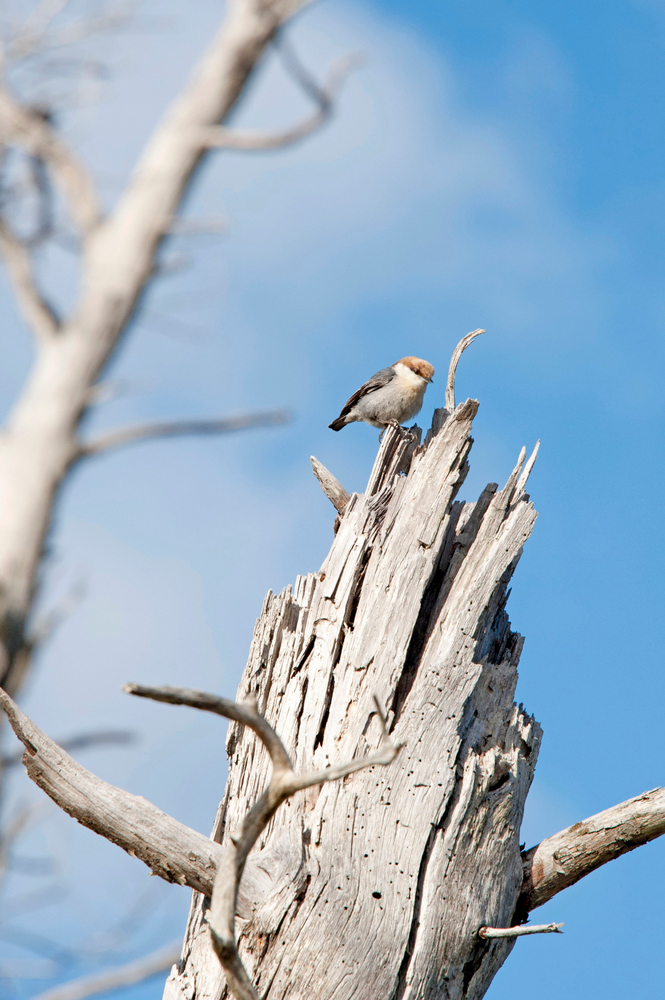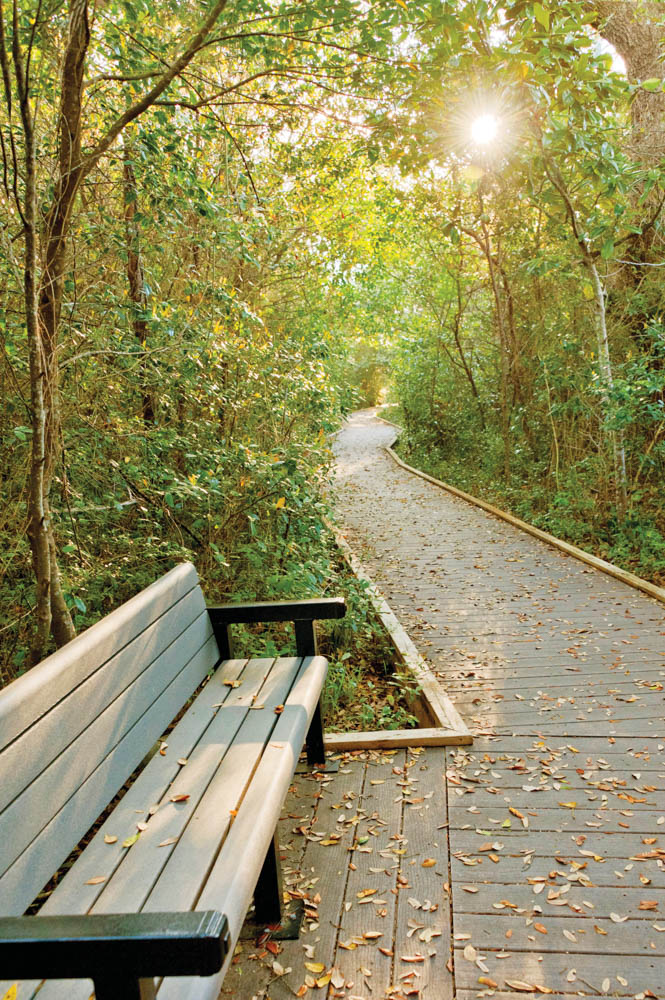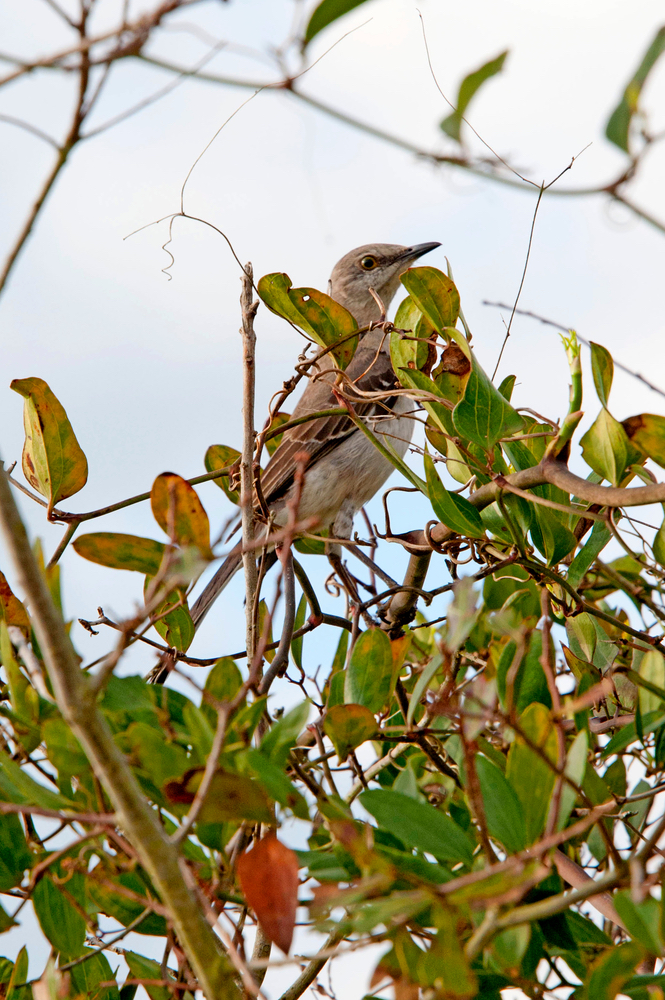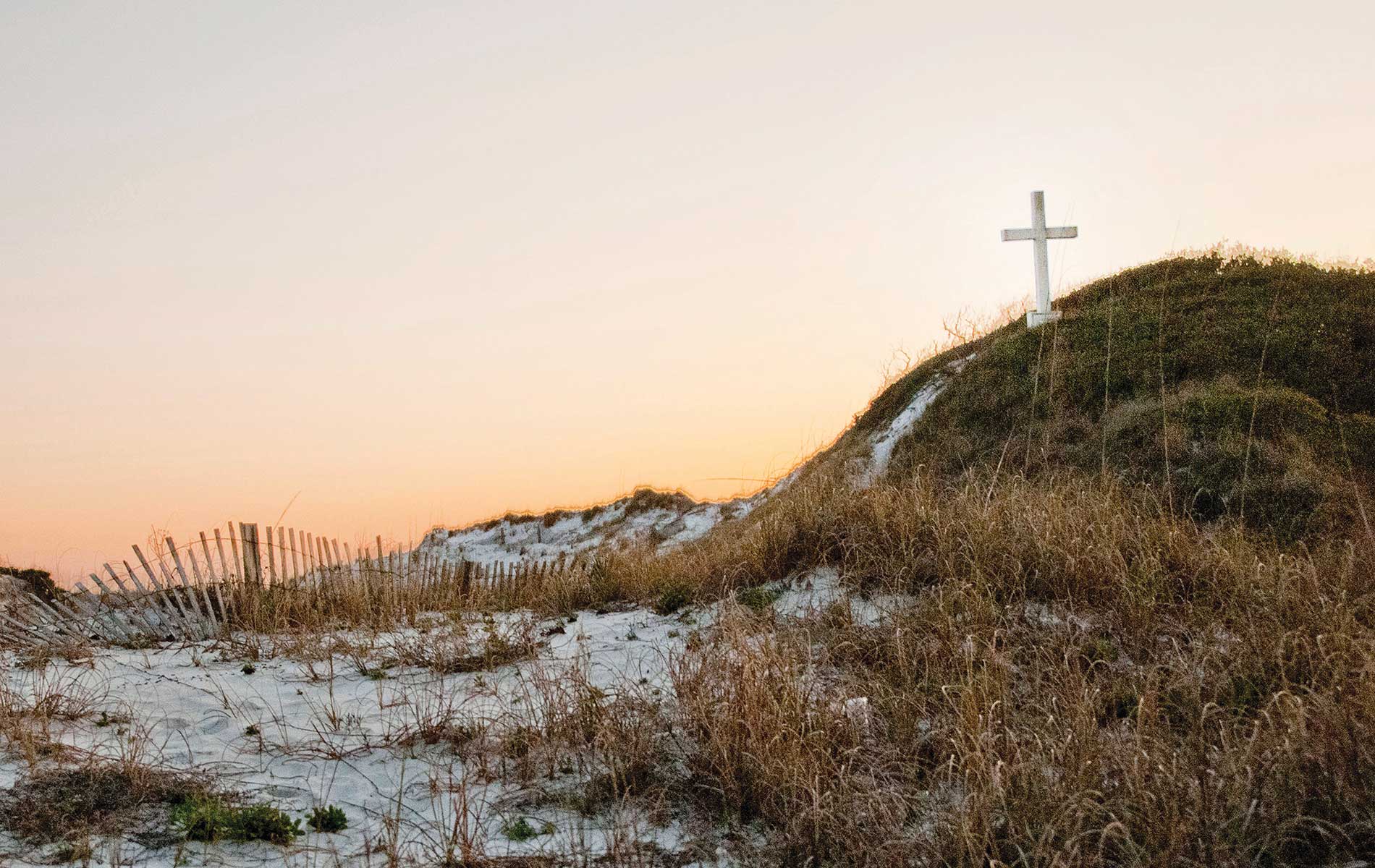
Coastal Guardians
By Anne W. Schultz | Photography by Cheryl Casey
Nothing clutters the unbroken symmetry of dunes rising and falling like ocean swells down to beaches lapped by the clear greenish-blue water distinctive to Florida’s northwest Gulf Coast. Silence as dense as a moisture-laden fog permeates the atmosphere. Although the scene appears devoid of life, some of Florida’s most unique and threatened species are sustained by these barrier islands that stretch 160 miles west from Fort Walton Beach, Florida, to Cat Island, Mississippi, now protected in Gulf Islands National Seashore.
Most visitors will never see all the life forms nourished by these islands, but here are a few. Their soft sands provide cushy layovers for migratory birds flying north after a balmy Caribbean winter. In summer, female sea turtles find these secluded beaches ideal sites for laying their eggs, as do shorebirds. Native Americans camped and fished off their abundant offshore waters. Spanish explorer Tristan de Luna and crew found safe harbor and attempted settlement here in 1559. It’s always been the mainland’s first line of defense, a shock absorber for hurricanes roaring in from Africa. Now it also provides recreation and refuge for the five million people visiting every year.
It usually requires a long flight to discover a paradise of undeveloped islands like these. But here they are—made in America—a barricade of islands running parallel to and separated from the mainland by brackish waters of bayous, sounds, and bays. Count on America’s national parks to save our richest treasures—those natural landmarks that retain the authentic character of our country—and preserve the abundant natural resources that have attracted and sustained human life since Native Americans starting arriving twenty to thirty thousand years ago.
To explore the Florida sections of the park, begin at Fort Pickens. Drive over Pensacola Bay on the bridge and enter a magical realm where America’s earliest history played out on Santa Rosa Island. Besides military forts and archeological sites, Fort Pickens abounds in untrammeled beaches for hiking and crystal Gulf waters for swimming, boating, and kayaking: a complete getaway from the stresses that characterize our twenty-first century lifestyle.
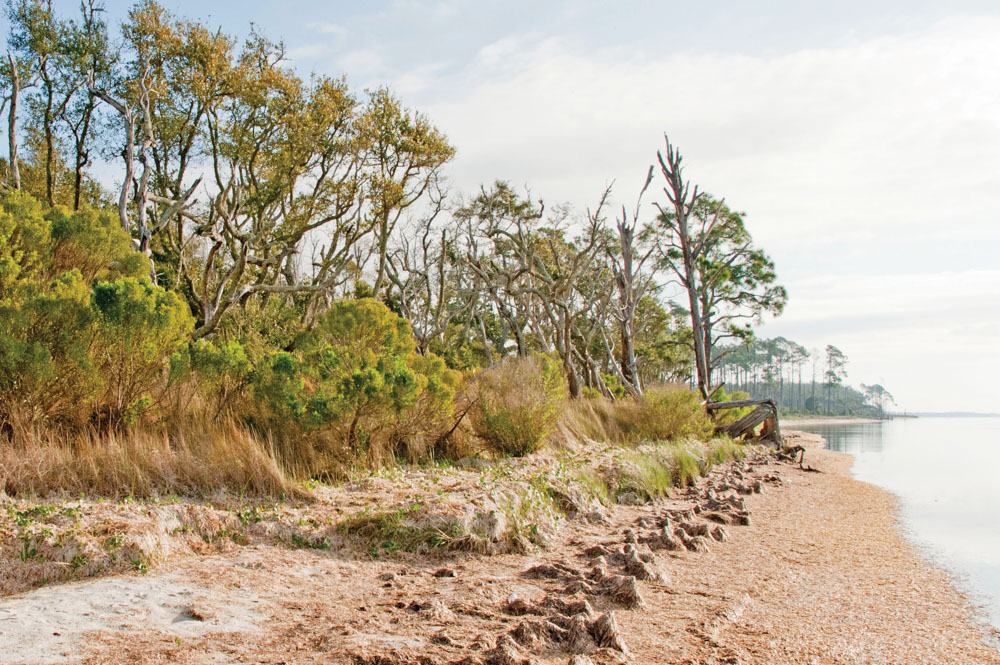
FORT PICKENS
A drive through the density of Pensacola Beach shows you what these pristine islands were saved from when protected as part of the national seashore in 1971. They are a living history museum, preserving what the Florida Gulf Coast once looked like from the Pensacola region to Destin before intensive development. Feel lucky to even glimpse the beach or water through the wall-to-wall condos, high-rises, shops, and restaurants that ironically block the reason people flock here. Keep driving until the scenery opens up into a spacious, luminous scene of rolling dunes, blue skies, and sparkling seas.
It’s hard to miss the large white cross crowning one of the few high dunes spared by Hurricane Ivan. It marks the site where Dominican friars in the party of Spanish explorer Tristan de Luna held their first religious service in 1559. Those sailors must have been grateful for calm Gulf waters and a deep protective harbor after a choppy Atlantic crossing. William Bartram, the first American naturalist, described Pensacola Harbor in 1775 as “safe and large enough to shelter all the navies of Europe.” It’s doubtful they had ever encountered sand so blindingly white that it resembles drifted snow.
“While the powder-white sand is mostly quartz, it originates in the Appalachian Mountains as granite that’s washed seaward by rivers and creeks until pulverized into fine grains that are swept onto shore by currents,” explains Mike Aymond, who has worked as a park ranger for more than twenty years and specializes in resource education. Ancient scriptures about the foolishness of building houses on sand make practical sense as well as spiritual wisdom when you learn more about barrier islands. “Most don’t realize the islands are constantly moving and shifting, reshaped by wind and waves,” says Aymond. “They are one of Florida’s most dynamic landforms. In big storms like hurricanes, they even roll over on themselves. One of the paradoxes of barrier islands is that their strength and resilience is a result of their fragile and fluid nature.”
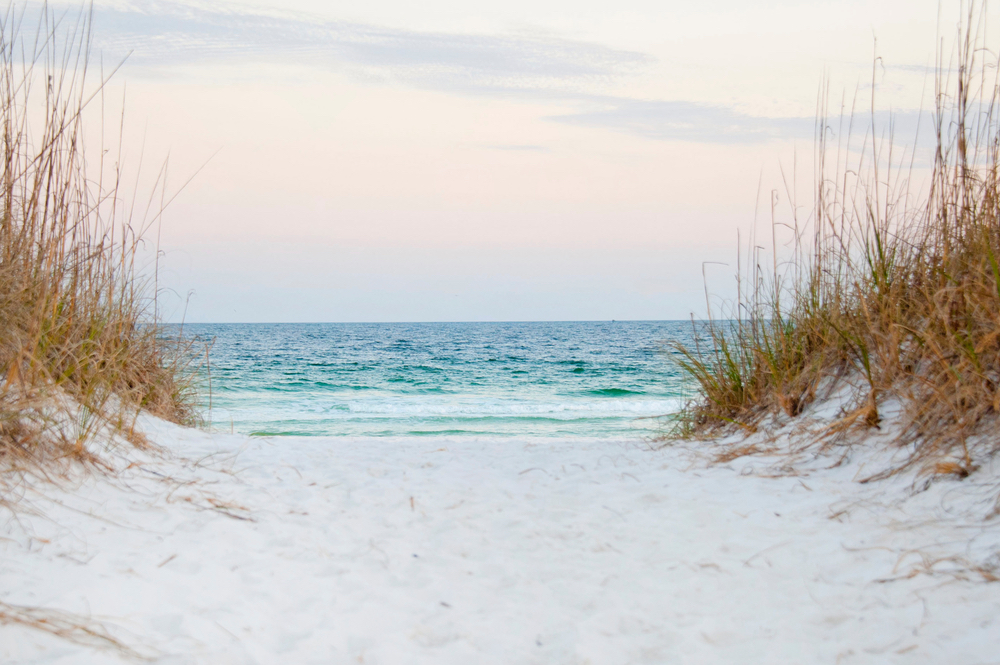
One of the paradoxes of
barrier islands is that their strength and resilience is a result of their fragile and fluid nature.
Aymond teaches these and other fascinating facts to schoolchildren on the barrier island ecology walk that’s part of the environmental education program offered by the park. “As future stewards of the planet, these children need to understand how nature works to make better-informed decisions,” he says. They learn how they can make a difference right now. “Regardless of where you live, everything you put on your lawn and pour down the drain will end up in the ocean eventually.” Science comes to life at the amazing state-of-the-art interpretative center Aymond helped design.
Sounds of booming cannons shattered the island’s quiet in 1861 when Union and Confederate troops clashed at Fort Pickens, one of the forts now open for visitors. These national seashore forts span over three hundred years, from the Spanish Colonial era Bateria de San Antonio on Pensacola Naval Air Station to the World War II vintage Battery 234, as one of the largest collection of evolving seacoast defenses in the country. Fort Pickens also gained the infamous distinction of holding Apache warrior Geronimo as a prisoner from 1886 to 1888.
Stroll down the length of Santa Rosa Island on the Florida National Scenic Trail, the only one of the National Scenic Trails to traverse a beach. Wander inland on the Blackbird Marsh Nature Trail and walk past marshes and wetlands until you reach a battery fortification where a narrow footpath leads to breathtaking Gulf views. A variety of wildlife habitats, including beaches and dunes, freshwater and salt marshes, and a maritime forest, draw large numbers of birds. Three hundred and forty-five species have been identified since counting began in 1965.
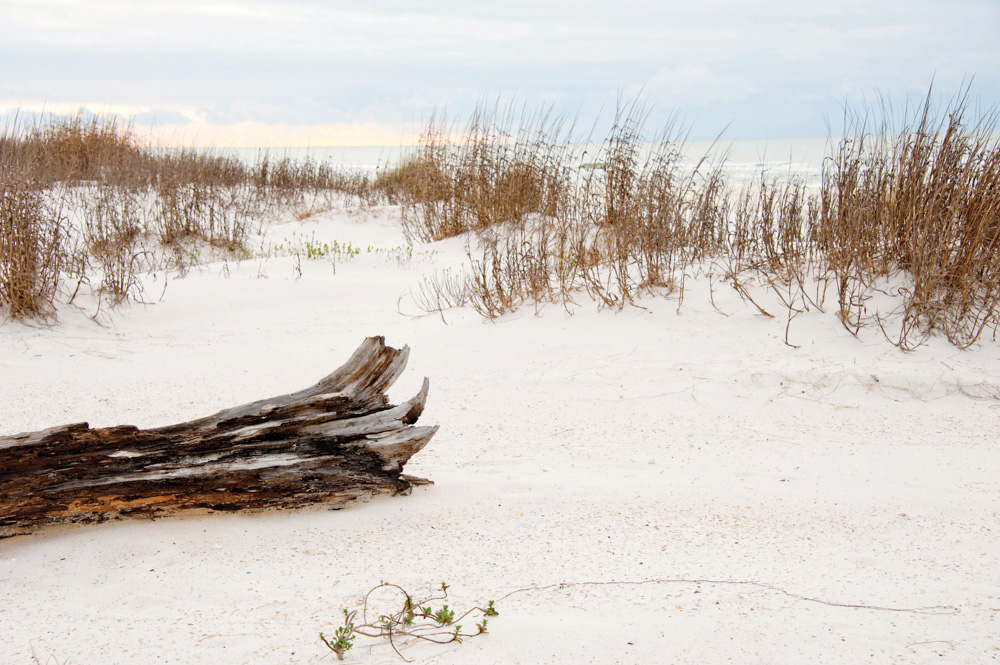
Long stretches of open beach attract scores of nesting shorebirds. Black skimmers and least terns nest in colonies from March to August, while Wilson’s plovers are solitary nesters. The rare snowy plover nests from February to August. Help these shorebirds survive by being a responsible beach user. Stay at least three hundred feet away from a nest; you are too close if birds become agitated. Use designated walkways and don’t walk in posted areas. Always secure dogs on leashes and keep the beach clean of food and litter that can entangle birds and other wildlife.
Nesting shorebirds are not the only ones who keep returning. “The park is so family-oriented that generations come back year after year for family reunions. People talk about it as their therapy: they get out in fresh air and sunshine, hear the water, and watch kids play on the beach. It’s an idyllic experience,” shares Aymond.
A ribbon of sand held in place by sea oats and other vegetation is all that separates the Gulf of Mexico from Big Lagoon.
PERDIDO KEY
Drive through congested tourist facilities to the end of the road and again be surprised at finding a peaceful oasis so close to its opposite. Rosamond Johnson Beach is named for a Korean War hero, the first African American from this region to die in that conflict. This was one of the few beaches open to African Americans during segregation. Built in 1835 to defend Pensacola Pass and the Naval Yard, Fort McRee has been reclaimed by waves and erosion. The only functional defenses remaining are a system of healthy dunes critical to the survival of the Perdido Key beach mouse, an endangered species found nowhere else on earth.
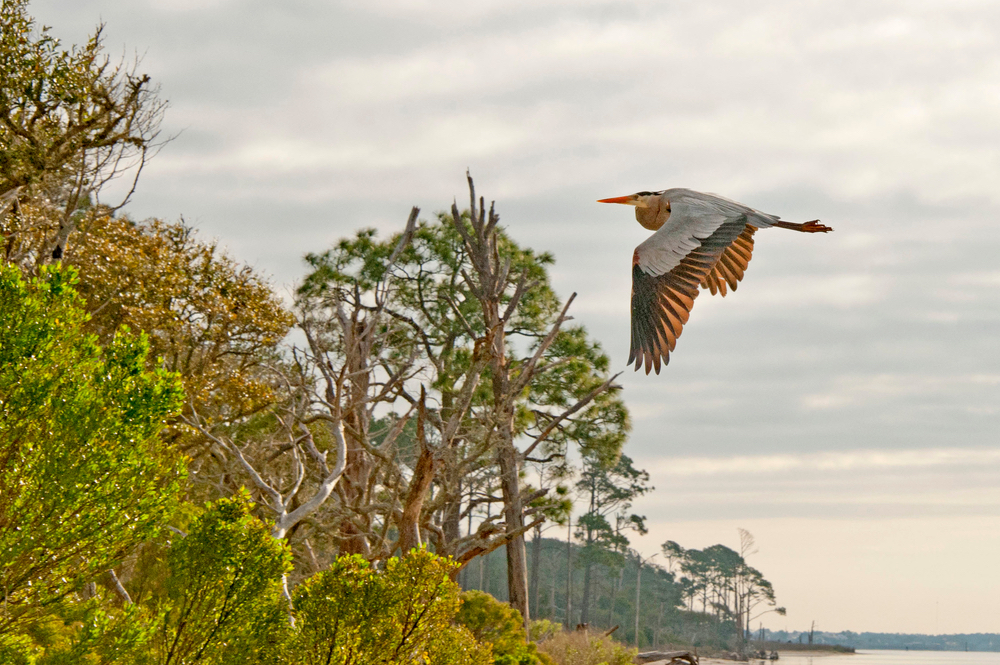
On this narrow island, you clearly see the fragility of nature. A ribbon of sand held in place by sea oats and other vegetation is all that separates the Gulf of Mexico (the most biologically diverse marine region on earth) from Big Lagoon (brackish waters are nurseries for 95 percent of commercially harvested seafood). “Barrier islands create bays and estuaries between the islands and the mainland, separating the rougher, saltier Gulf waters from the calmer, more protected waters of the bay,” Aymond informs. If global warming persists, rising water could flood these low narrow islands and allow more saline waters to disrupt the delicate balance needed for the survival of marine creatures like shrimp and crab. What? No more iconic Gulf Coast specialties like fried shrimp baskets and crab cakes proudly served at coastal eateries?
For now, the Big Lagoon is a great place to kayak the blueway. Stay dry and see another aspect of island life from an elevated boardwalk on the Discovery Trail that takes visitors over dunes, marshes, and through woodlands where birds sing and other communities of life flourish on this slender bar of sand.
NAVAL LIVE OAKS
For many today, Florida’s Gulf Coast is all about fun and sun, but that was not always the case. In the late 1700s and early 1800s, marauding pirates attacked ships, snatched hundreds of seamen from decks, and held them as prisoners for ransom. Conflict fermented along these shores until the American Navy outfoxed their enemies by using a tree! A live oak tree’s resistance to rot, disease, and decay make it an ideal material for building ships. The Mediterranean-based pirates had no access to this durable wood as this particular live oak species only grows along Southern coastal regions from southeastern Virginia to Texas. To ensure future supplies, John Quincy Adams protected live oaks in America’s first federal tree farm in 1828. Descendants of the old-growth trees are still protected at Naval Live Oaks, a section located off US Highway 98 near Gulf Breeze.
“Pirates must have puzzled about why the cannonballs they fired bounced right off our warships,” exclaims Sigrid Benson, a former writer and editor for the USDA Forest Service and park volunteer for twelve years. “Once they figured out live oak wood made the difference, they started poaching the trees. People love our exhibit where you see for yourself just how heavy this wood is compared to other trees. They have no trouble using a rope pulley to raise a block of pine, but few make headway lifting the live oak block even a few inches.” A plaster replica of a massive live oak dominates the park visitor center where panels tell the history of the region and about live oaks.
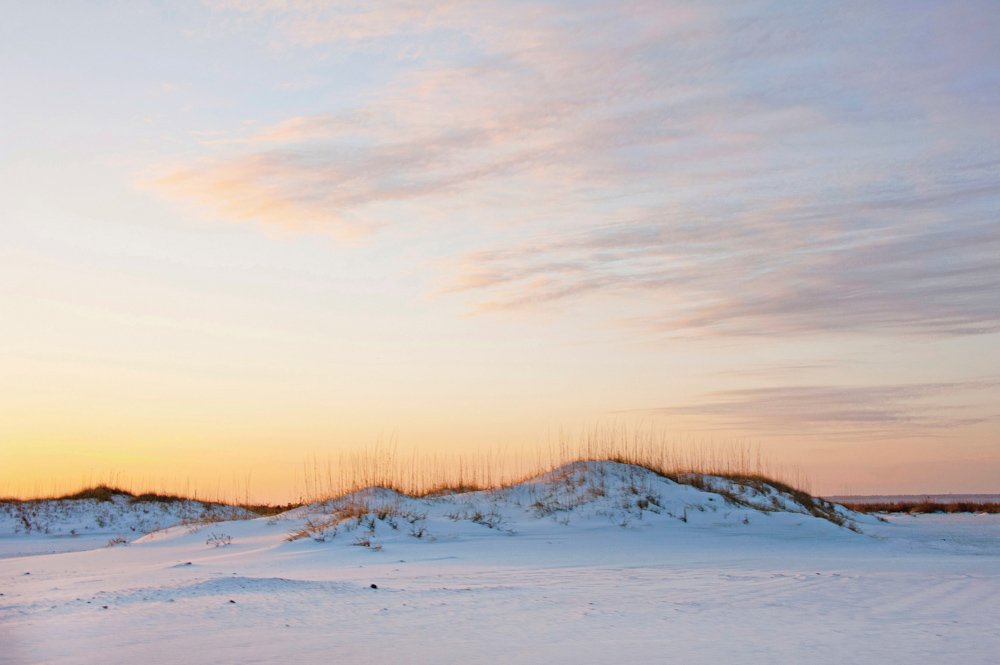
Although iron and steel later replaced wooden warships, these majestic trees remain as old warhorses, still defending the natural and historical assets of our Southern shores and their people as they have since the barrier islands formed five thousand years ago. One information panel enlightens us: “Trees our nation once preserved for military defense now protect our coastlines in unexpected ways.” Some of those ways include sheltering coastal communities from hurricane winds as they reduce wind speed by at least fifteen miles per hour. Their broad canopies provide shelter for local and migratory birds. Insects, rodents, and small mammals secure homes in the fallen leaves, bark, and expansive roots. “Live oaks turn a hammock into a home,” reads another panel. They provide quality of life by absorbing carbon dioxide and replenishing it with fresh oxygen. They also help prevent erosion, nourish the soil, and inspire us with their sheltering beauty.
Stroll down the Breckenridge Nature Trail, an interpretative path behind the visitor’s center to learn more about native flora and fauna. Cross US Highway 98 to hike the Andrew Jackson Trail down the first road connecting Pensacola to St. Augustine. Or see how the expression “busy as a beaver” came about by watching these enterprising animals at work on Beaver Pond Trail. Old Borrow Pit Trail leads through longleaf and sand pine communities where you can observe how prescribed burns rejuvenate forests of this type.
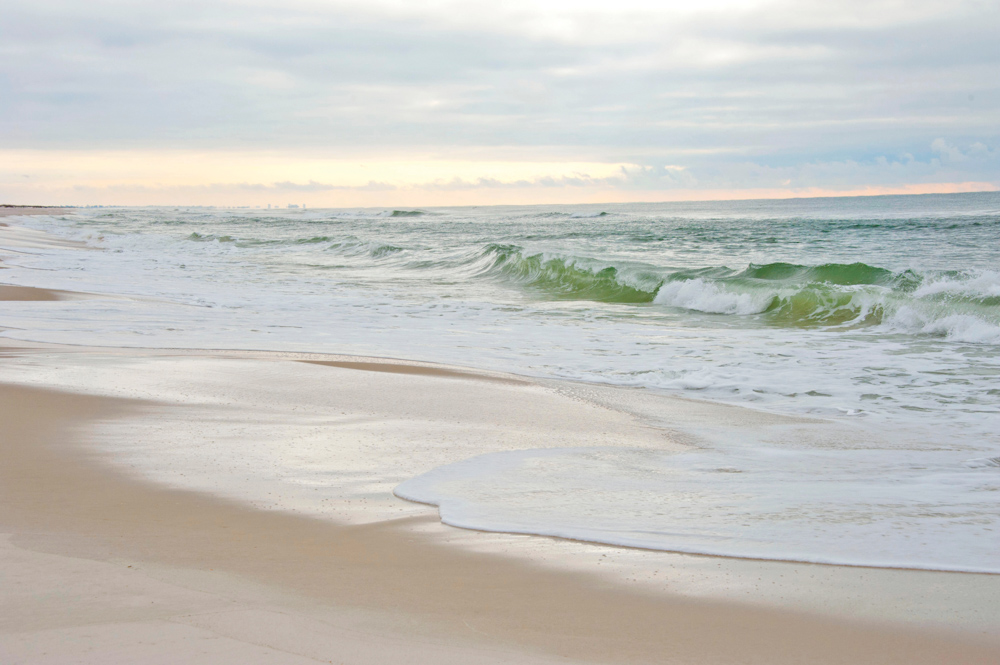
OKALOOSA SEGMENT
On the outskirts of Fort Walton Beach, drop by the Okaloosa section off US Highway 98 on the way to Destin. It’s mainly a large open grassy area with a boat launch and narrow paths leading to the bay and its long narrow beach. This day-use facility offers picnic tables, beach walks, and swimming. Like other sections of the park, it’s an interlude of tranquility woven between bustling beach communities where you can chill out and just be.
“Barrier islands are magical places. Here nature reveals itself a little more readily, geological processes may be observed a little more easily, and patterns seem to emerge from chaos,” Aymond shares. Like migratory birds, we need resting places where we find refuge from the distractions of our time. Come empty-handed, leaving your cell phone behind, and enter a timeless sanctuary where you find peace and serenity: qualities never outdated but sought in every generation. No wonder prophets, sages, mystics, and religious teachers retreated alone to natural places like mountaintops, the seashore, and into the wilderness, seeking enlightenment and silence to better hear the still small voice within. These Gulf Islands welcome us today, still providing refuge from the storms of life.
— V —
Where to Stay
Stay in Pensacola, the closest city near the park. Located in the historic North Hill neighborhood, the Noble Manor Bed and Breakfast built in 1905 is now a sleek European-style retreat with spacious rooms and a gourmet breakfast. Gracious hosts Bonnie and Bob Robertson will guide you to Pensacola’s best. Visit innkeeper@noblemanor.com or call 850-434-9544 for information and reservations.
Park Information
Gulf Islands National Seashore Florida District Headquarters
1801 Gulf Breeze Pkwy.
Gulf Breeze, FL 32563
(850) 934-2600 or visit: www.nps.gov/guis
Share This Story!
KEEP UP WITH THE LATEST STORIES FROM VIE



